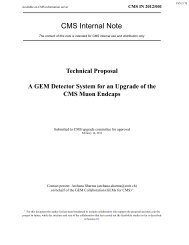Kana et al. 1988. S. Carolina Charleston SLR Case Study
Kana et al. 1988. S. Carolina Charleston SLR Case Study
Kana et al. 1988. S. Carolina Charleston SLR Case Study
You also want an ePaper? Increase the reach of your titles
YUMPU automatically turns print PDFs into web optimized ePapers that Google loves.
Although most of the marsh in this area is flooded twice daily, the upper limit of s<strong>al</strong>t-tolerant species<br />
is considerably above mean high water. Because of the lunar cycle and other astronomic or climatic events,<br />
higher tides than average occur periodic<strong>al</strong>ly. Spring tides occur approximately fortnightly in conjunction<br />
with the new and full moons. The statistic<strong>al</strong> average of these, referred to as mean high water spring, has an<br />
elevation of 1.0 m (3.1 ft) above mean sea level in <strong>Charleston</strong> (U.S. Department of Commerce 1981).<br />
Less frequent tid<strong>al</strong> flooding occurs annu<strong>al</strong>ly at even higher elevations ranging upwards of 1.5 m (5.0<br />
ft) above mean sea level. In a South <strong>Carolina</strong> marsh near the case study area, the flooding of margin<strong>al</strong><br />
highland occurred at elevations of 1.5-2 m above man sea level (approximately 80 cm above norm<strong>al</strong>). The<br />
peak astronomic tide that was responsible for the flooding included an estimated wind s<strong>et</strong>up of 15-20 cm<br />
(0.54.0 ft) under 7-9 m/s (1347 mph) northeast winds.<br />
40
















